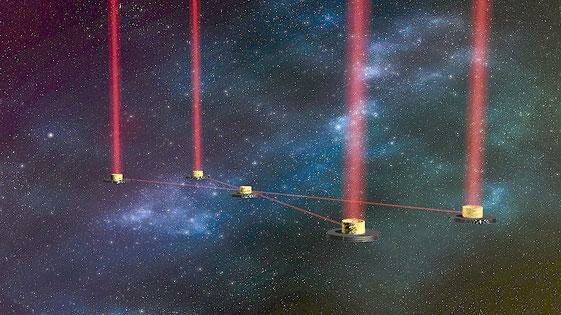
Previously we talked about the search for habitability on other worlds: ideally, we need to take reflected light from a planet, disperse it into a rainbow called a spectrum, and use that to identify what atoms and molecules are in the atmosphere if it has one. Unfortunately, getting the light from a planet, known as "direct imaging", is very difficult due to the star being billions of times brighter than a planet, and because trying to physically separate a planet from its star on an image is like trying to spot a 50c coin in Sydney from Canberra.
Subscribe now for unlimited access.
or signup to continue reading
There are ways around this problem though. To begin with, there is a technique known as "transmission spectroscopy" that can be used with our current telescopes to obtain one of these spectra from a planet. We wait for a planet to cross in front of its star from our point of view, known as a transit (much like a solar eclipse), and use the starlight passing through the atmosphere to measure the molecules in the planet. This still has its problems though: the planet has to be able to pass in front of the star, which only happens for a small number of the planets in our Universe, and is more sensitive to large planets close into the star - generally too hot for life.
We are helping with these efforts in getting space interferometry off the ground.
But if we want to image a planet using the light reflected off of it, we need to turn the starlight right down. One method to do this is "coronography": a mask is placed over the centre of the telescope so that only the central point (the star) is blocked, leaving the ability to look at the region outside the star. This has worked really well, and most of the planets we've been able to directly image (search HR 8799 for a stunning image) used this technique. The limiting factor then becomes the resolution - you need a telescope with an extremely large mirror to see an Earth-like planet in the habitable zone, because otherwise the coronagraph will block out the planet too! Some of the instruments being designed on the soon-to-be world's largest telescope, the 40m Extremely Large Telescope, will have a coronagraph that should allow us to probe the atmospheres of these foreign worlds.
Another technique, one that I and others at ANU are working on, is "nulling interferometry". We have talked about interferometry before, where we use multiple small telescopes to simulate one massive one. Such a telescope can easily distinguish a planet from its star. The nulling part of the name refers to a clever technique that allows the light coming directly from the middle of the image is extinguished, but the light off-axis (around the sides) is amplified. If we combine these two, we can overcome the problems in hunting for habitable exoplanets.
Such a space mission is already being planned, known as the Large Interferometer For Exoplanets (LIFE)" and has been chosen by the European Space Agency for further research. Here at the ANU, we are helping with these efforts in space interferometry, using ground-based robots and small satellites known as CubeSats to test whether such a mission will work. We hope coronography and space nulling interferometry will be able to answer once and for all "are we alone?"
- Jonah Hansen is a PhD student specialising in space interferometry at Mount Stromlo Observatory, at the Australian National University.

